By now, the discerning drinker has figured out that not all mezcals are created equal.
The evolution in reputation from head-rattling smoke bomb to revered cult favorite has opened the door for various expressions made from numerous agave species, coming from different states, and using multiple roasting, fermentation, and distillation methods.
The boom is real: shipments rose 26 percent in 2019, according to the Consejo Regulador del Mezcal, and for the first time, Americans consume more than Mexicans. But with all that’s available, where does that leave the bold tippler, unsure of what’s in her copita?
Predictably, mezcal geeks have gotten ahead of the pack. Says Brooklyn bar operator and author of “Spirits of Latin America,” Ivy Mix. “When we first opened Leyenda six years ago, I was amazed by how many people were coming in and not asking what mezcal is but what kind of mezcal do we have. Most people think that mezcal is one-dimensional and smokey, but that’s simply not the case.”
Since mezcal may be produced from many agave species, with an appellation of origin about 500,000 square kilometers in nine states, differences abound. However, about 90 percent is made from the prolific espadin agave. Other species like tobala, madrecuixe and tepextate, have grabbed attention as much for rarity as their distinctive qualities.
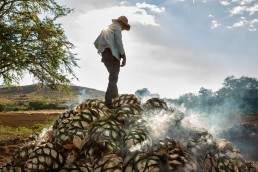
Espadin Is King Of Mezcal Agave
But according to most mezcal whisperers, the differences go far beyond species and region. Spirit and bar guru Steve Olson, who now works full-time for pioneer brand Del Maguey, says idiosyncratic production methods mean it’s hard to pinpoint a single style of espadin. Aged mezcal isn’t widespread, but as producers explore, they’re available, too – Amaras ages an espadin for three months in ex-bourbon and new American oak casks. Los Amantes sells an 8-month old reposado and 18 month old añejo.
When Del Maguey broke through with lower-priced, bar-centric Vida, the cocktail floodgates opened. Now, with brands like Sombra and Montelobos widely distributed, exploration beyond the Smokey Margarita has exploded, and anyone can quickly attain a baseline education in mezcal.
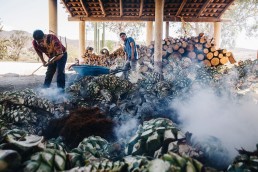
Fire, No Smoke
About the smoke for which mezcal is perhaps most associated in the States: aggressively smokey mezcals may have initially set the tone, but smoke is just one organoleptic component, as Olson points out.
“Things changed when bartenders started to realize that mezcal also added structure, terroir, and minerality to cocktails. It’s no longer for smoke, it’s not even the main thing anymore,” he says.
“When I give people a mezcal from San Luis Potosi from an agave called salmiana roasted in ovens like tequila, not smoked in the ground like people think all mezcals should be, they’ll say ‘This isn’t mezcal.’ But it is,” says Mix
Non-smoked brands, including Fidencio Sin Humo and Viejo Indecente can impress with the rich flavors of cooked agaves – apples, roasted pineapples, and pears with a characteristic earthiness. Oven-roasting is more likely to reveal an eau de vie quality, says Arik Torren, importer of Fidencio. While he also brings in smokey expressions, people work their way to the Sin Humo soon enough. “It brings a different quality to a cocktail altogether.”
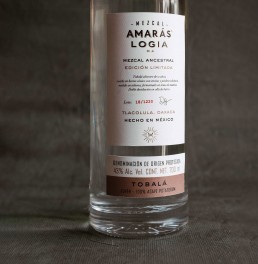
Tobala, Agave's Truffle
Tobala, what Mix calls the black truffle of agaves, is most sought after. Slow-growing, small, and mostly wild, it can yield lots of tropical notes. Mix describes El Jorgolio tobala like overripe papayas and mangoes, “a rich and unctuous fruit bomb.” Del Maguey single village tobala is widely sought after but struggles to produce 1,000 liters annually.
Then there are the ensemble mezcals, made of two or more species roasted, fermented, and distilled together. Each expression depends on what the mezcalero has at hand – El Buho uses Arroqueño, Coyote, Barril, and Cuishe, says brand co-owner, John Henry.
Wild agave mezcals can be as different as pinot noir and chardonnay, and it’s difficult to pin down specific styles without broad exposure, says Luis Niño de Rivera, co-founder and brand ambassador for Amaras. He describes his Durango cenzio as meaty, oily, and butterscotch-like; the Guerrero cupreata as herbal and vegetal with a bit of cacao and chili; and the tobala, made in clay pot stills, as minty, aromatic, and anise-like. The aromas of Rey Campero Tepextate remind Mix of a burning church filled with incense and flowers.
There are so many moving parts – village, species of agave, growing location, cooking methods, duration of fermentation, and still choice (while copper and stainless steel are becoming more common, clay and wood stills still are widely used) – that trying to create a Venn diagram for the world of mezcal would yield a mess of preschool splotches. The regional groupings familiar to single malt Scotch drinkers simply aren’t enough to embrace the scope of agave spirits. To really get to know mezcal, it’s better to work your way through a few dozen.
In other words, there’s no substitute for frequent sampling to find favorites, which is where plans by El Buho – two different sampler boxes with small bottles of four types of mezcal packed together – may help. Las Vegas bartender and trainer Francesco LaFranconi’s trademark saying – “We’re not drinking, we’re learning” – has rarely applied so appropriately to a spirit as it does to mezcal.
Then There's The Cocktails
Exploring Mezcal doesn’t have to be all about sipping varietals. This funky, flavorful spirit is perfect for cocktails that go way beyond mezcal margaritas. Here’s a couple of sophisticated drinks that’s befitting of this complex and versatile spirit.
Tia Mia
by Ivy Mix, Leyenda, Brooklyn
1 oz Appleton Signature rum
1 oz Del Maguey Vida Mezcal
½ oz Pierre Ferrand Orange Curaçao
½ oz Orgeat Syrup (Orgeat Works Toasted Almond is recommended)
¾ oz lime
Add all Shake all ingredients in a cocktail shaker with ice. Strain over crushed ice in a large rocks or pint glass. Garnish with an orchid (if you’re feeling fancy), lime wheel and mint sprig.
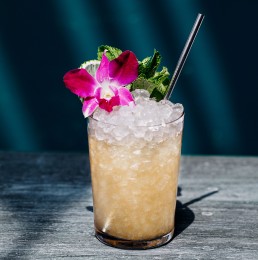
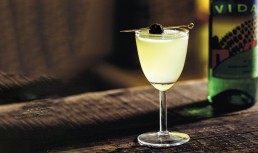
El Ultimo Guerrero Azteca
by Carlos Soto, formerly Maison Artemisia, Mexico City
3-4 oz. Del Maguey Vida Single Village Mezcal
3-4 oz. creme de cacao white liqueur
3-4 oz. Yellow Chartreuse liqueur
3-4 oz. freshly squeezed lemon juice
Combine ingredients in a cocktail shaker and fill with ice. Shake until well chilled and fine-strain into a chilled coupe or Nick & Nora glass. Garnish with brandied cherry.
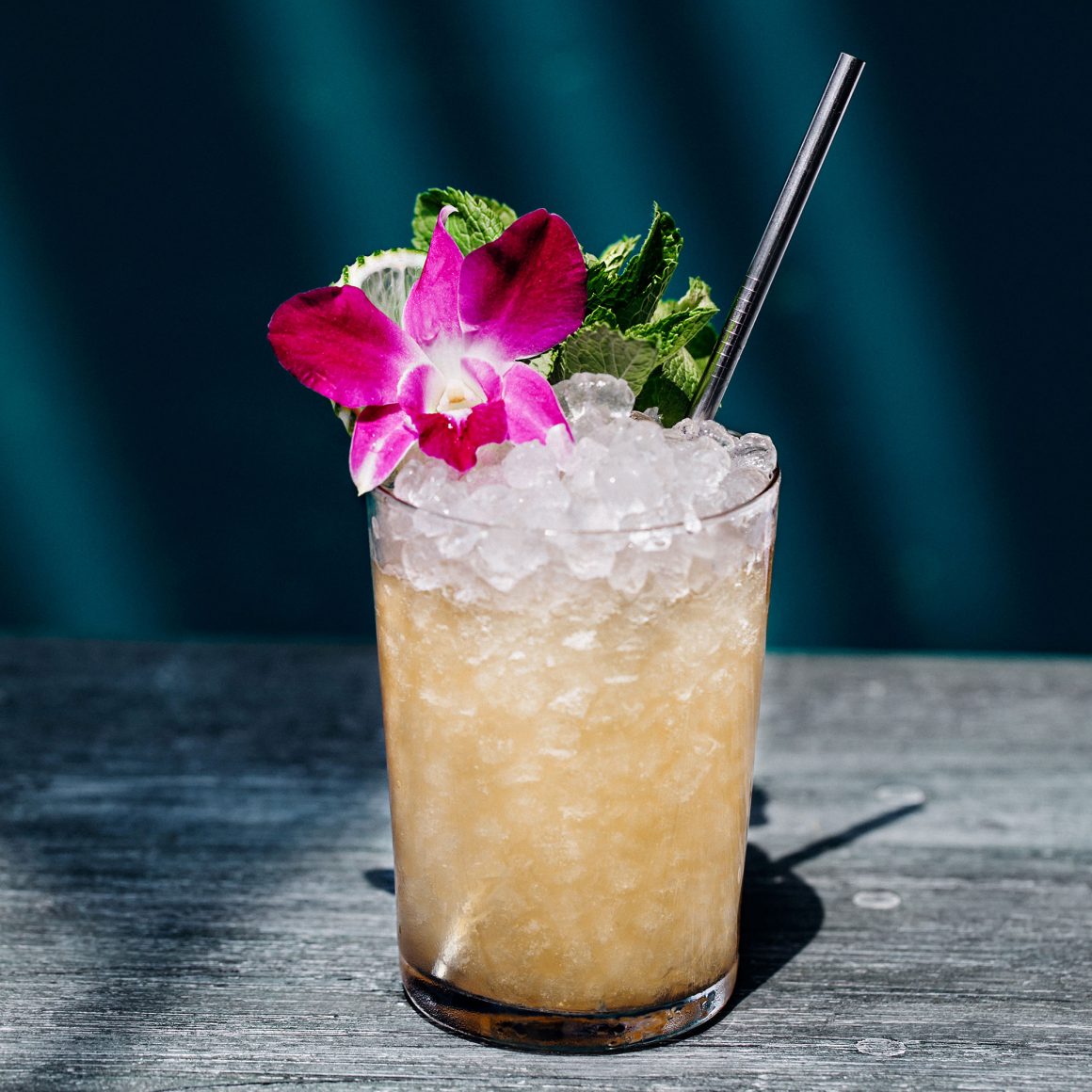
Tia Mia
by Ivy Mix, Leyenda, Brooklyn
1 oz Appleton Signature rum
1 oz Del Maguey Vida Mezcal
½ oz Pierre Ferrand Orange Curaçao
½ oz Orgeat Syrup (Orgeat Works Toasted Almond is recommended)
¾ oz lime
Add all Shake all ingredients in a cocktail shaker with ice. Strain over crushed ice in a large rocks or pint glass. Garnish with an orchid (if you’re feeling fancy), lime wheel and mint sprig.

El Ultimo Guerrero Azteca
by Carlos Soto, formerly Maison Artemisia, Mexico City
3?4 oz. Del Maguey Vida Single Village Mezcal
3?4 oz. creme de cacao white liqueur
3?4 oz. Yellow Chartreuse liqueur
3?4 oz. freshly squeezed lemon juice
Combine ingredients in a cocktail shaker and fill with ice. Shake until well chilled and fine-strain into a chilled coupe or Nick & Nora glass. Garnish with brandied cherry.
“We’re not drinking, we’re learning"
— Francesco LaFranconi
Jack Robertiello is an internationally known spirits writer and speaker with years of competition judging experience. Jack currently writes for Beverage Media, Flavor and the Menu, Cheers magazine, Beverage Dynamic, and Nightclub & Bar. In addition to his writing, Jack is a consultant to spirits companies and teaches private classes and seminars on tasting spirits, especially focusing on tequila, rum, and whisky.


